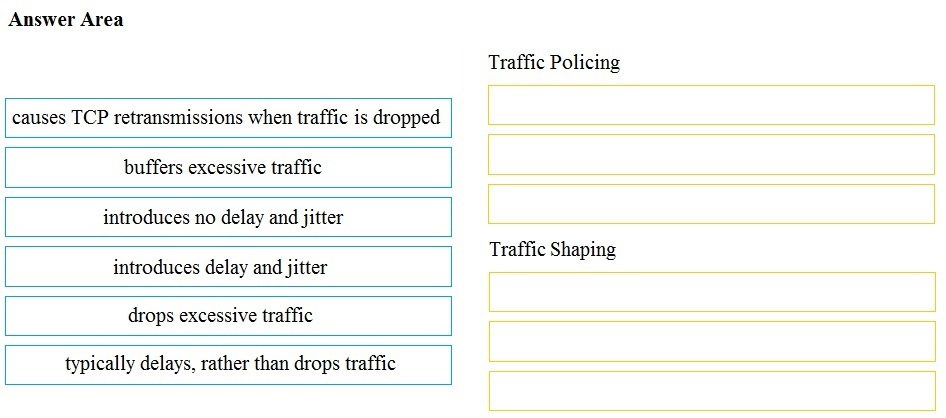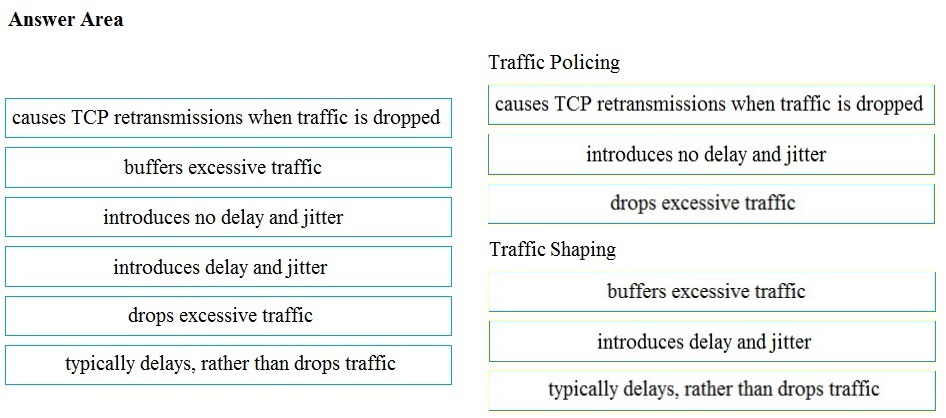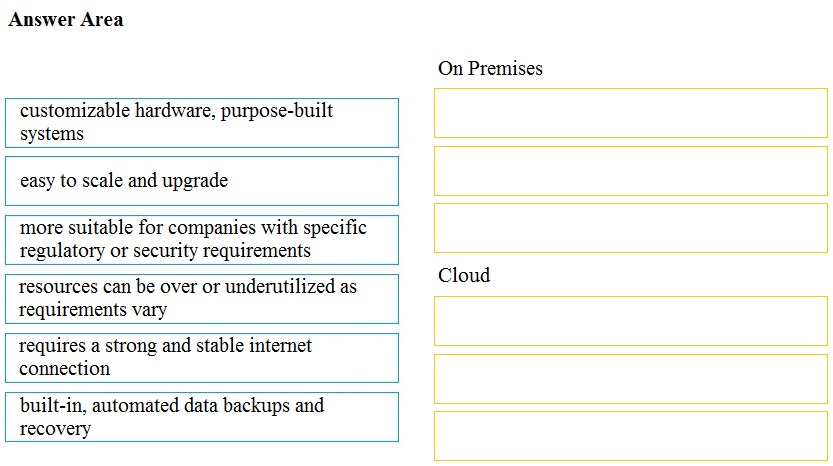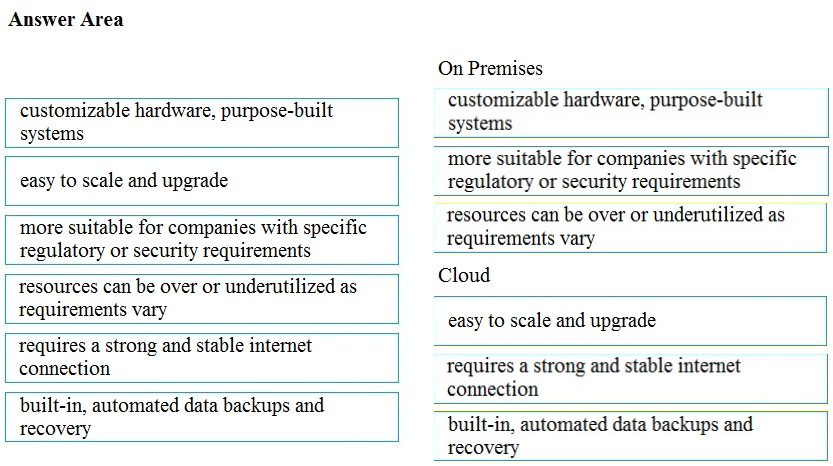What is the difference between a RIB and a FIB?
A
Which QoS component alters a packet to change the way that traffic is treated in the network?
C
DRAG DROP -
Drag and drop the descriptions from the left onto the correct QoS components on the right.
Select and Place:

Which statement about Cisco Express Forwarding is true?
C
What is a benefit of deploying an on-premises infrastructure versus a cloud infrastructure deployment?
D
DRAG DROP -
Drag and drop the characteristics from the left onto the appropriate infrastructure deployment types on the right.
Select and Place:

How does QoS traffic shaping alleviate network congestion?
B
Reference:
https://www.cisco.com/c/en/us/support/docs/quality-of-service-qos/qos-policing/19645-policevsshape.html
An engineer is describing QoS to a client.
Which two facts apply to traffic policing? (Choose two.)
AD
Which component handles the orchestration plane of the Cisco SD-WAN?
A
Reference:
https://www.ciscolive.com/c/dam/r/ciscolive/emea/docs/2018/pdf/BRKCRS-2112.pdf page 8.
What are two device roles in Cisco SD-Access fabric? (Choose two.)
AE